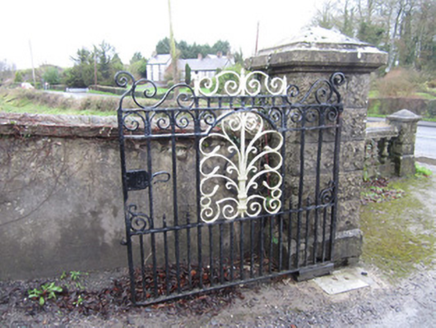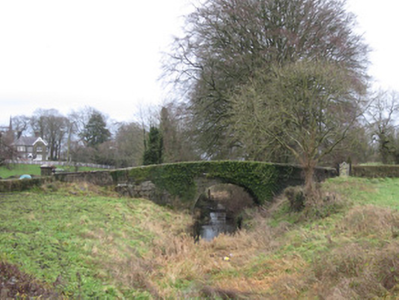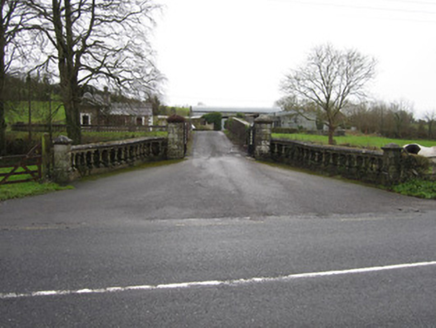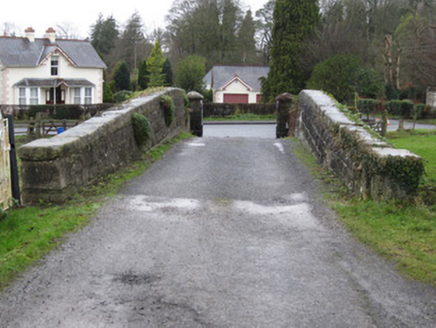Survey Data
Reg No
41304075
Rating
Regional
Categories of Special Interest
Architectural, Technical
Previous Name
Teehill Cottage
Original Use
Bridge
In Use As
Bridge
Date
1835 - 1845
Coordinates
249667, 325250
Date Recorded
20/12/2011
Date Updated
--/--/--
Description
Single-arch limestone canal bridge built c.1839, carrying access from N54 Cavan Road south-west over disused Ulster Canal to Teehill Cottage. Located midway between Clones Aquaduct and Canal Stores. Parapet walls of bridge constructed of squared rubble coursed to follow gently humpbacked line of bridge surface with heavy, flat capping stones having rounded arrises and punch-finished surface. Square piers having heavy flat stone caps terminate the four ends of the bridge walls. Projecting fillet moulded string course separates parapet from spandrels which have same construction as parapet walls although with horizontal coursing. Round arch has punch-finished ashlar voussoirs and stone arch soffit over canal and tow path, latter on raised bank of canal atop ashlar sandstone walling. Both elevations substantially obscured by ivy and top surface is hard surfaced with no obvious surface drainage. Cast concrete walls extend parapets on north-eastern side of bridge leading to square quarry-faced concrete-built piers holding ornate wrought-iron gates. Splayed entrance of gateway onto Cavan Road has curved balustrades with turned concrete balusters terminated with lower square piers of concrete blocks finished to resemble quarry-faced ashlar.
Appraisal
This is a fine example of early to mid-nineteenth-century canal bridge architecture and most likely built to plans by Directors General of Inland Navigation engineer, John Killaly. William Dargan was the contractor who completed the work on the Canal following Killaly’s death in 1832 and the waterway linked Lough Neagh with Lough Erne up to 1931 when it was closed and drained. It is not clear who was the actual designer or mason who constructed the bridge but it was erected some time between 1836 and 1841 and continues to stand as a functioning and graceful element of a now disused canal scheme. The high standard of design and well-executed masonry of this structure which has served its purpose for at least a hundred and fifty years with no visible major repairs is thus a testament to the quality of the original designer and mason. Together with other surviving bridges, locks and structures, features like Teehill Bridge continue to illustrate an important element of civil engineering heritage in Clones and will be incorporated in the proposed reopening of this section of the Ulster Canal for use as a recreational waterway.







